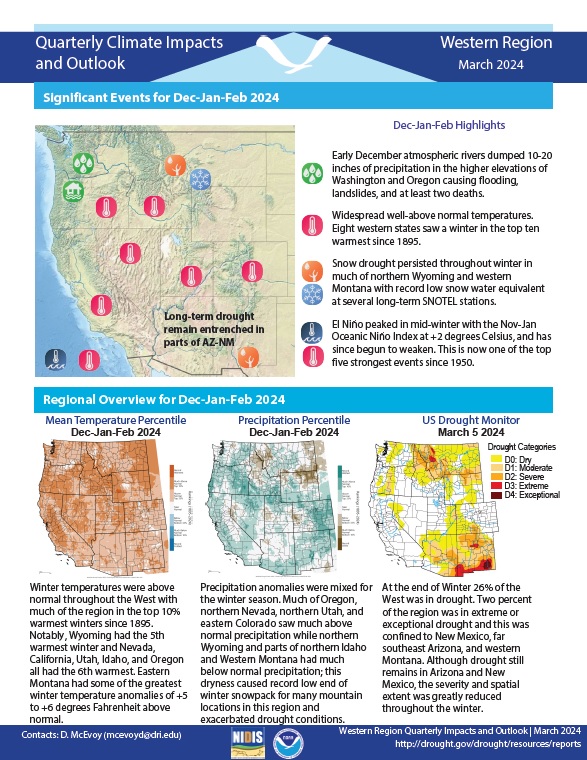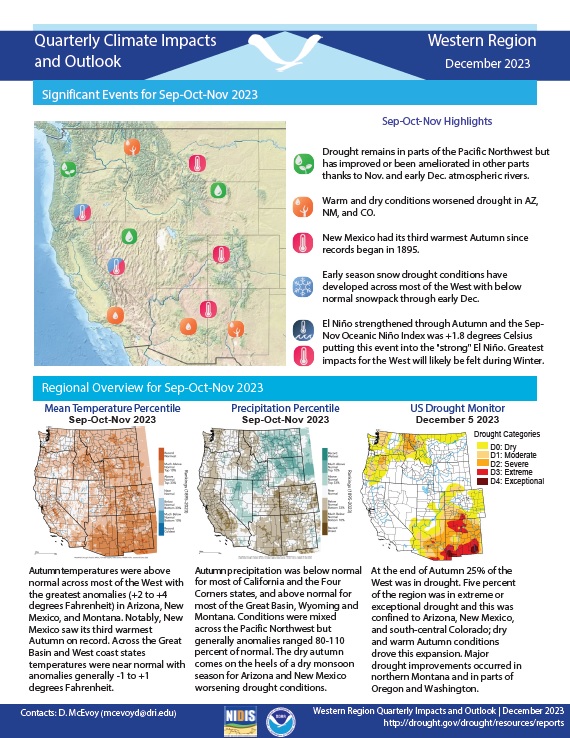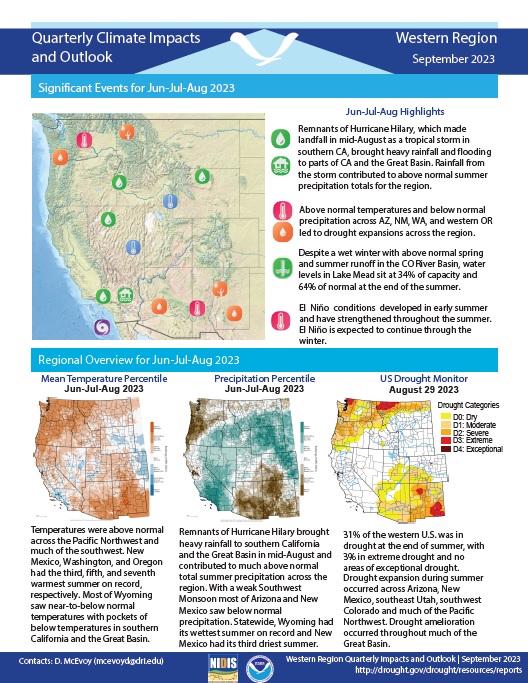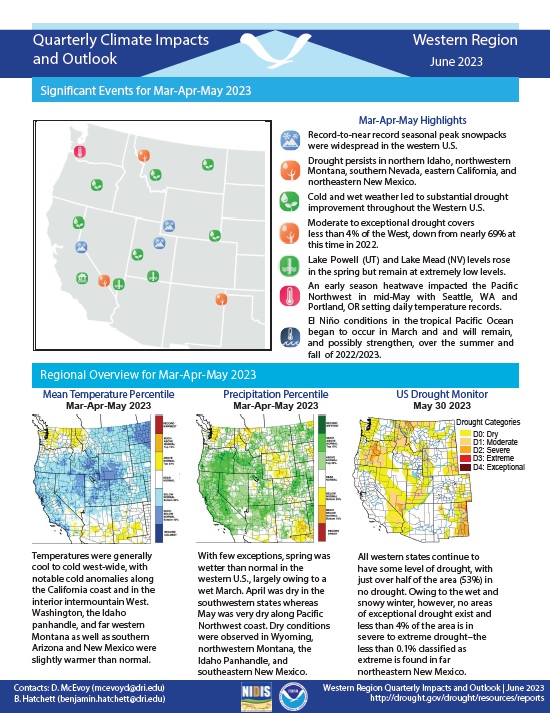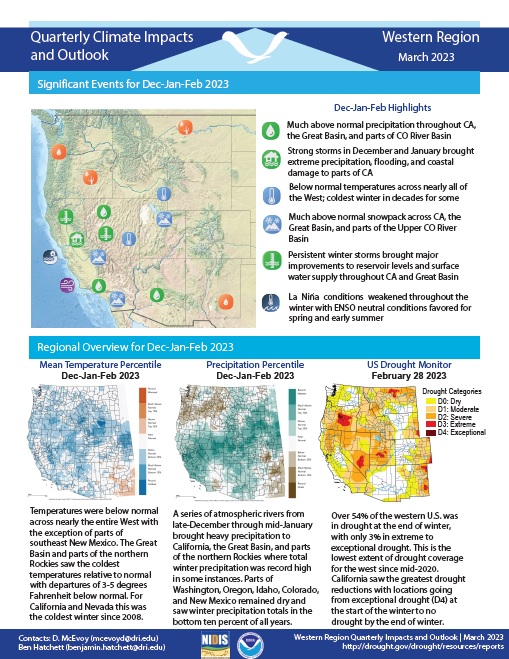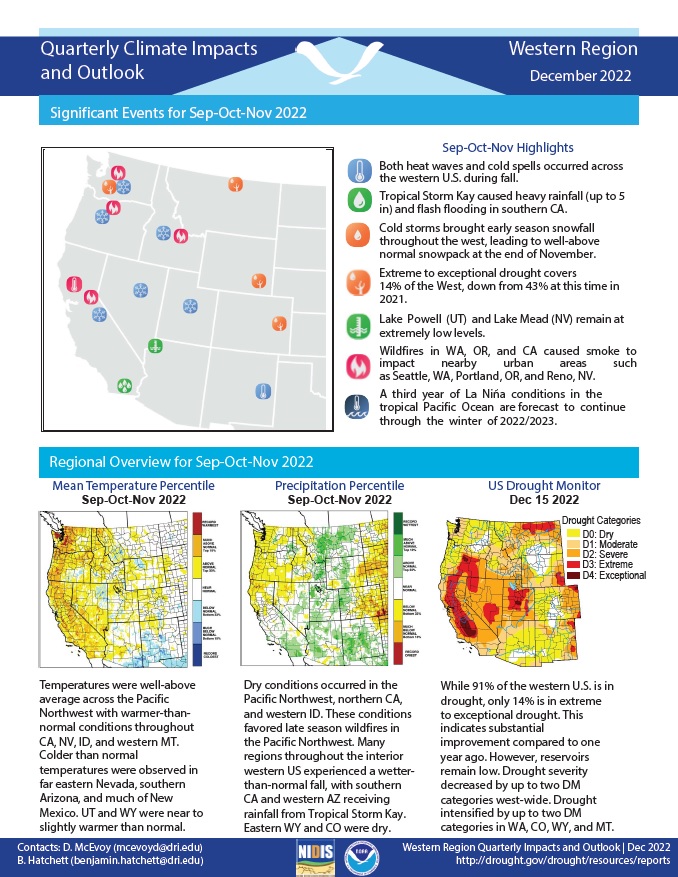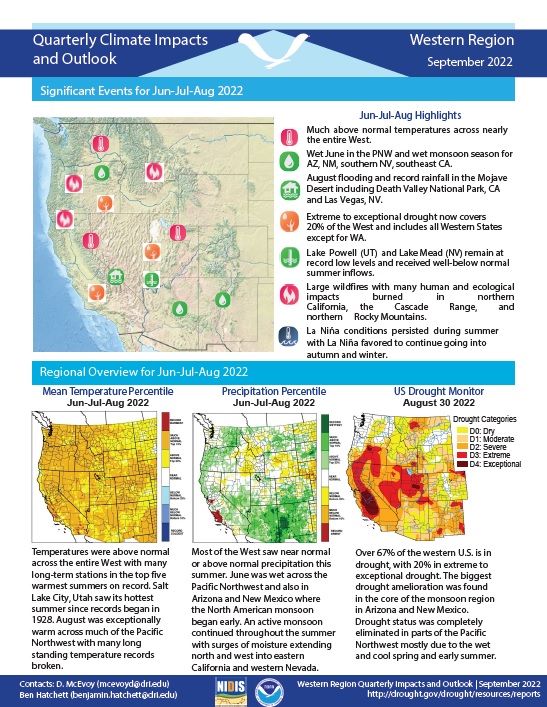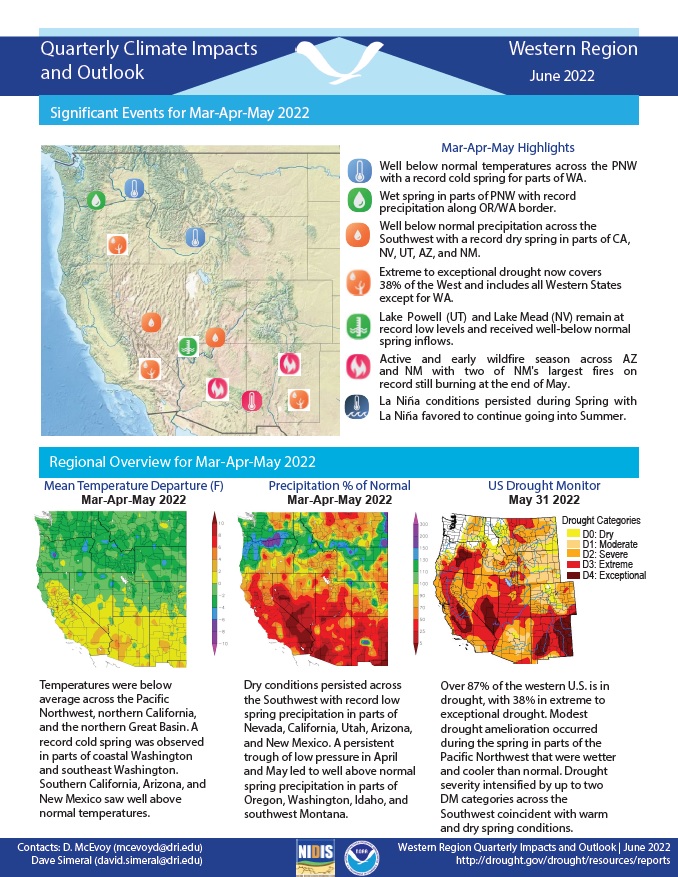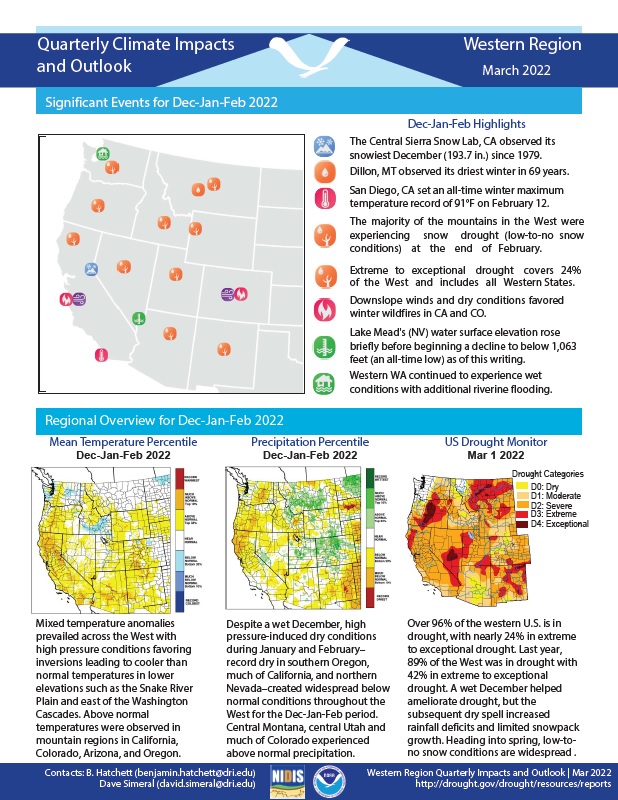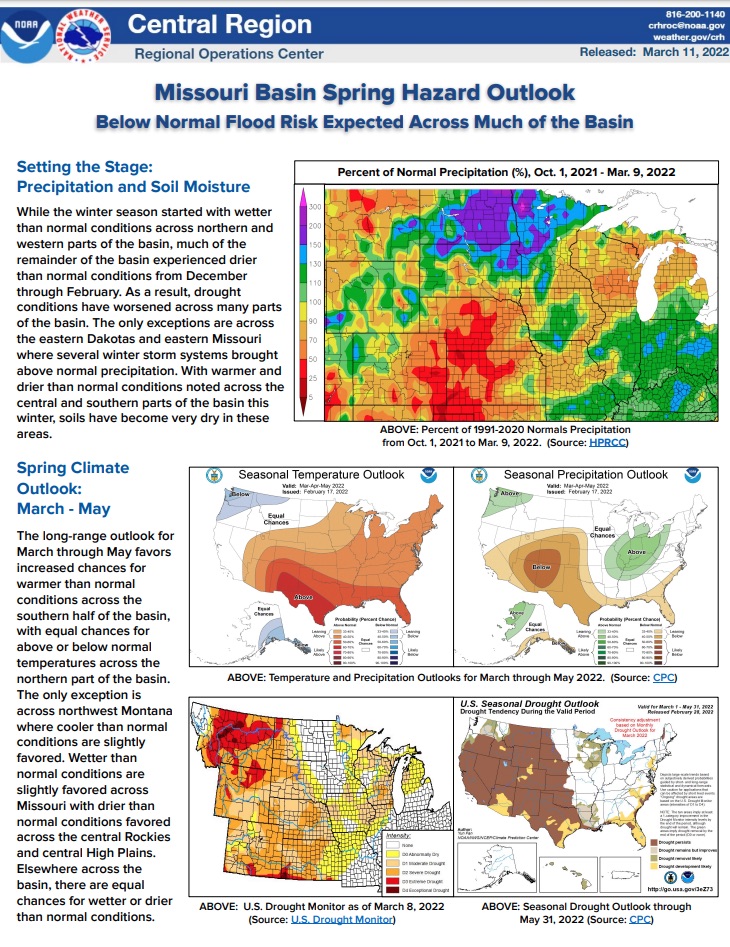Quarterly Climate Impacts and Outlook for the Western Region for December 2023–February 2024. Dated March 2024.
Winter temperatures were above normal throughout the West with much of the region in the top 10% warmest winters since 1895. Precipitation anomalies were mixed for the winter season. Much of Oregon, northern Nevada, northern Utah, and eastern Colorado saw much above normal precipitation while northern Wyoming and parts of northern Idaho and Western Montana had much below normal precipitation.
Quarterly Climate Impacts and Outlook for the Western Region for September–November 2023. Dated December 2023.
Quarterly Climate Impacts and Outlook for the Western Region for June–August 2023. Dated September 2023.
Temperatures were above normal across the Pacific Northwest and much of the Southwest. New Mexico, Washington, and Oregon had their third, fifth, and seventh warmest summer on record, respectively. Remnants of Hurricane Hilary brought heavy rainfall to southern California and the Great Basin in mid-August and contributed to much-above-normal total summer precipitation across the region.
Quarterly Climate Impacts and Outlook for the Western Region for March–May 2023. Dated June 2023.
Temperatures were generally cool to cold west-wide, with notable cold anomalies along the California coast and in the interior Intermountain West. With few exceptions, spring was wetter than normal in the western U.S., largely owing to a wet March.
Quarterly Climate Impacts and Outlook for the Western Region for December 2022–February 2023. Dated March 2023.
Temperatures were below normal across nearly the entire West with the exception of parts of southeast New Mexico. A series of atmospheric rivers from late December through mid-January brought heavy precipitation to California, the Great Basin, and parts of the northern Rockies where total winter precipitation was record high in some instances.
Quarterly Climate Impacts and Outlook for the Western Region for September–November 2022. Dated December 2022.
Quarterly Climate Impacts and Outlook for the Western Region for June–August 2022. Dated September 2022.
Temperatures were above normal across the entire West with many long-term stations in the top five warmest summers on record. Most of the West saw near-normal or above-normal precipitation this summer.
Quarterly Climate Impacts and Outlook for the Western Region for March–May 2022. Dated June 2022.
Temperatures were below average across the Pacific Northwest, northern California, and the northern Great Basin. Dry conditions persisted across the Southwest with record low spring precipitation in parts of Nevada, California, Utah, Arizona, and New Mexico.
Quarterly Climate Impacts and Outlook for the Western Region for December 2021–February 2022. Dated March 2022.
Above-normal temperatures were observed in mountain regions in California, Colorado, Arizona, and Oregon. Despite a wet December, high pressure-induced dry conditions during January and February created widespread below-normal conditions throughout the West.
The National Weather Service developed 2022 Spring Hazard Outlooks in coordination with NOAA's National Centers for Environmental Information (NCEI) and National Integrated Drought Information System (NIDIS); High Plains Regional Climate Center; Midwestern Regional Climate Center; U.S. Department of Agriculture; and National Interagency Fire Centers' Geographic Area Coordination Centers. This outlook highlights the various spring hazards that could occur and potential impacts across the Mountain West.


